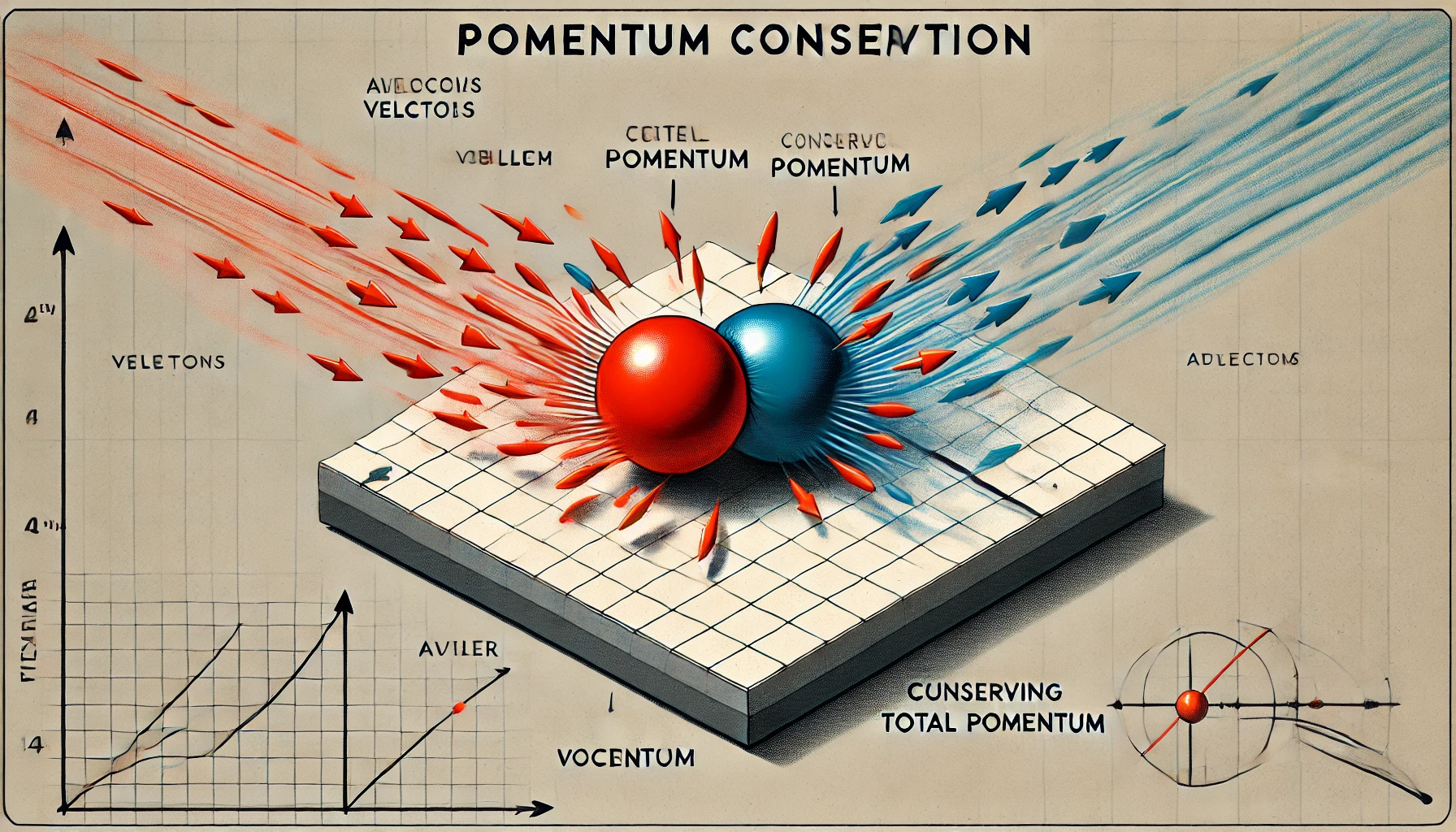A perfectly inelastic collision is a type of collision where two objects collide and stick together after the collision, moving as a single entity. In such collisions, the maximum amount of kinetic energy is lost, but the total momentum of the system is conserved.
Key Characteristics of Perfectly Inelastic Collisions
- Momentum Conservation: The total momentum of the system before and after the collision remains constant: m1v1+m2v2=(m1+m2)vfm_1 v_1 + m_2 v_2 = (m_1 + m_2) v_f where:
- m1,m2m_1, m_2: Masses of the objects
- v1,v2v_1, v_2: Velocities of the objects before the collision
- vfv_f: Common velocity of the combined mass after the collision
- Kinetic Energy Loss: Kinetic energy is not conserved in perfectly inelastic collisions. Some of it is transformed into other forms of energy, such as heat, sound, or deformation. The kinetic energy loss can be calculated as: ΔKE=KEinitial−KEfinal\Delta KE = KE_{\text{initial}} – KE_{\text{final}} Initial kinetic energy: KEinitial=12m1v12+12m2v22KE_{\text{initial}} = \frac{1}{2} m_1 v_1^2 + \frac{1}{2} m_2 v_2^2 Final kinetic energy: KEfinal=12(m1+m2)vf2KE_{\text{final}} = \frac{1}{2} (m_1 + m_2) v_f^2
- Objects Stick Together: After the collision, the two objects move together with a common velocity.
Example Problem
Two objects collide and stick together:
- m1=2 kgm_1 = 2 \, \text{kg}, v1=5 m/sv_1 = 5 \, \text{m/s} (moving right)
- m2=3 kgm_2 = 3 \, \text{kg}, v2=−2 m/sv_2 = -2 \, \text{m/s} (moving left)
Step 1: Use momentum conservation to find vfv_f:
m1v1+m2v2=(m1+m2)vfm_1 v_1 + m_2 v_2 = (m_1 + m_2) v_f (2)(5)+(3)(−2)=(2+3)vf(2)(5) + (3)(-2) = (2 + 3)v_f 10−6=5vf⇒vf=45=0.8 m/s (rightward)10 – 6 = 5v_f \quad \Rightarrow \quad v_f = \frac{4}{5} = 0.8 \, \text{m/s (rightward)}
Step 2: Calculate initial and final kinetic energy:
KEinitial=12(2)(52)+12(3)(−22)KE_{\text{initial}} = \frac{1}{2}(2)(5^2) + \frac{1}{2}(3)(-2^2) KEinitial=25+6=31 JKE_{\text{initial}} = 25 + 6 = 31 \, \text{J} KEfinal=12(2+3)(0.82)KE_{\text{final}} = \frac{1}{2}(2 + 3)(0.8^2) KEfinal=12(5)(0.64)=1.6 JKE_{\text{final}} = \frac{1}{2}(5)(0.64) = 1.6 \, \text{J}
Step 3: Calculate kinetic energy loss:
ΔKE=KEinitial−KEfinal=31−1.6=29.4 J\Delta KE = KE_{\text{initial}} – KE_{\text{final}} = 31 – 1.6 = 29.4 \, \text{J}
Applications
- Car crashes (with deformation of vehicles)
- Ballistic pendulum experiments
- Asteroid impacts (if they coalesce after collision)
Perfectly inelastic collisions are an essential concept in physics, helping us understand real-world interactions where objects combine and energy transforms into non-mechanical forms.

Leave a Reply